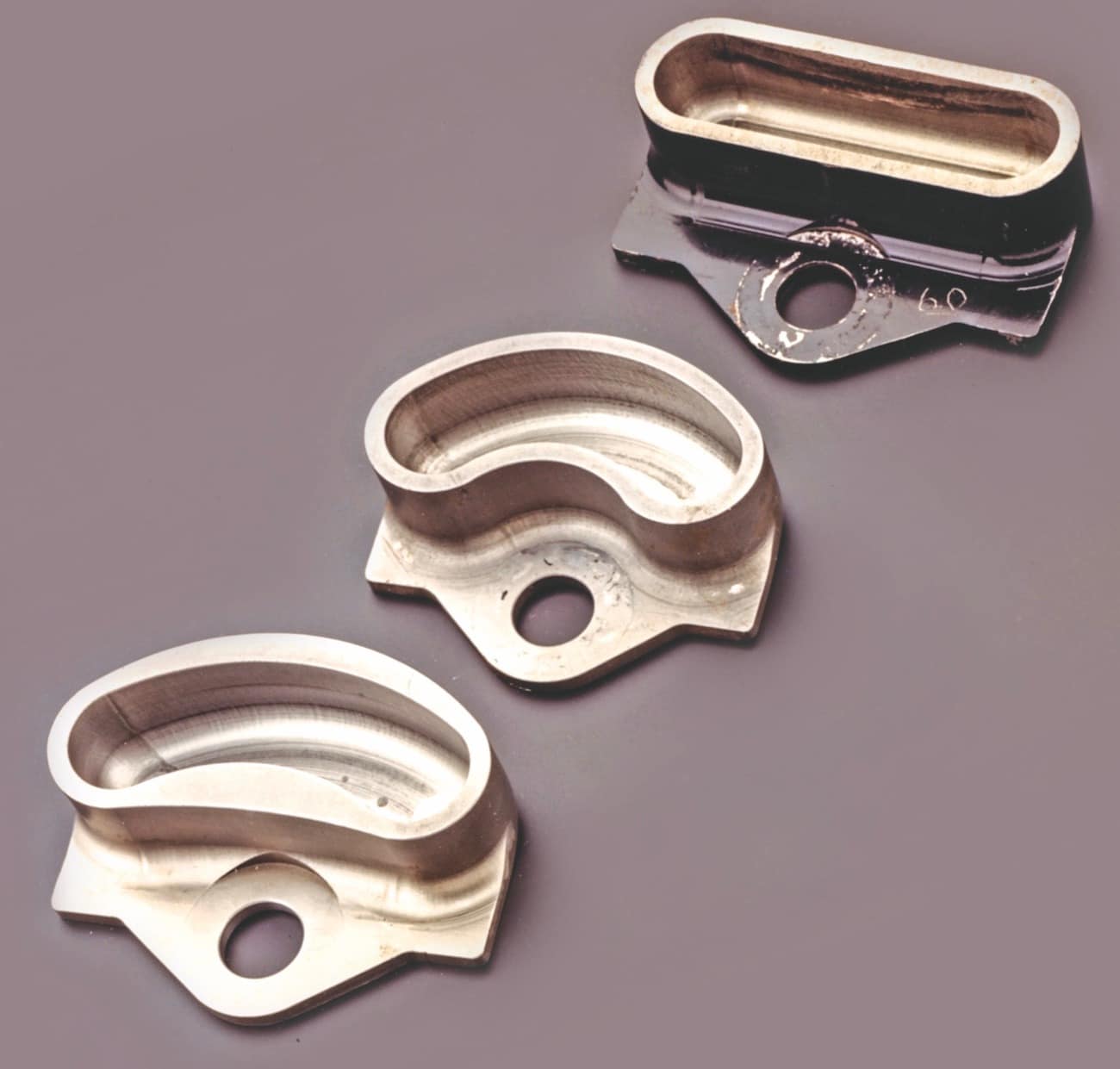FORGOTTEN MOTOCROSS TECH: VARIABLE ANGLE STEERING SYSTEM (VASS)
 You’ll have to look at the photos closely to see how the VAS system changes the head angle as the handlebars are turned.
You’ll have to look at the photos closely to see how the VAS system changes the head angle as the handlebars are turned.
Motocross history is filled with examples of creative ideas that were heralded as groundbreaking but, because of the rapid rate of change in development, sank into the swamp of forgotten technology. Although some ideas are best left abandoned, others were truly innovative (if not ultimately successful). MXA loves to reveal motocross’ tech trivia. Do you remember this idea? Kent Howerton’s Variable Angle Steering System (VASS).
 Under the cover, which is removed in this view, is a plate that holds an oval steerer tube. The roller ball bushing that interacts with the VASS cups is visible.
Under the cover, which is removed in this view, is a plate that holds an oval steerer tube. The roller ball bushing that interacts with the VASS cups is visible.
After his retirement, former Husqvarna, Suzuki and Kawasaki factory rider Kent Howerton tested a Variable Angle Steering System that changed the front fork’s angle, depending on where the bike was aimed. In a straight line, the VASS had the maximum fork angle for stability. As the handlebars were turned, the fork angle was decreased to improve cornering input.
 There are different VASS cups, which are actually cams to move the steerer tube when the bars are turned
There are different VASS cups, which are actually cams to move the steerer tube when the bars are turned
To achieve this, the patent called for an actuator assembly, which is defined by the position of the cam-bearing slot relative to the steering stem. In essence, the movement of the handlebars is connected to a bearing-guided ball-and-cup cam. As the forks are turned, the fork angle is steepened depending on the shape of the cam. Think of the steering stem as a swizzle stick that moves in a different dimension from a fixed steering stem.





Comments are closed.